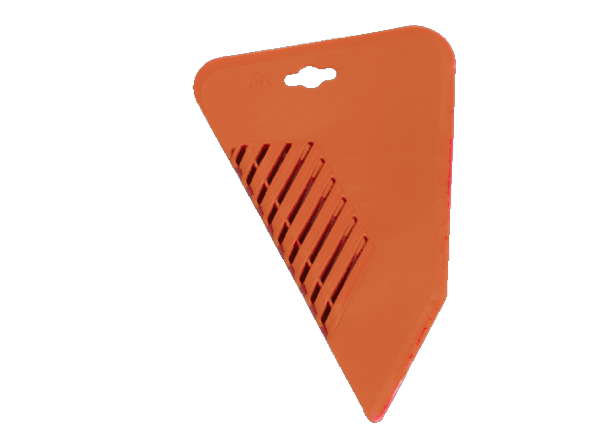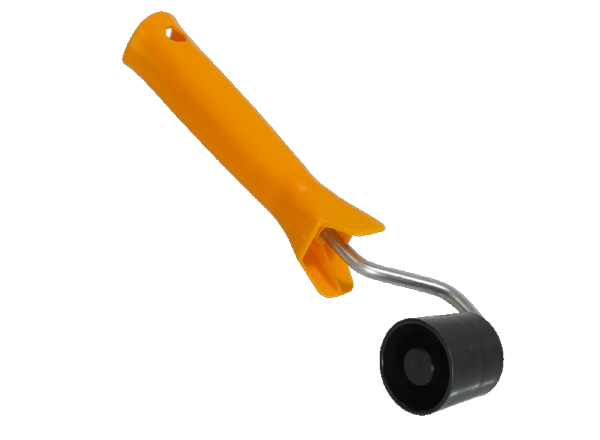Wallpapering tools
With the right tools, wallpapering is great fun and will succeed without any problem!

Wallpaper Smoother
A smoother may be used when hanging wallpapers with hardwearing surfaces, such as non-woven renovation material or vinyl wallpapers on non-woven substrates. It is also often used as a cutting edge when wallpapering.

Seam Roller (conical)
A conical seam roller is used to press the seams of embossed vinyl or vinyl wallpapers.

Utility Knife
An indispensible wallpapering utensil, which should ideally have a snap-off blade. Such a knife is useful for cutting wallpaper around skirting boards, doors etc.

Seam Roller
This seam roller, made from soft plastic, is used to press the seams of delicate wallpapers.

Paint Roller
A paint roller (with synthetic fibres) is best suited to applying paste directly to the wall (“paste the wall” technique for hanging non-woven wallpapers) or for applying wallpaper primer etc.

Paperhanging Shears
The standard tool for cutting lengths of wallpaper.

Trimming Knifer
This tool is used for cutting overlapping seams.

Straight Edge
Practical aid for the cutting or trimming of wallpaper lengths.

Rubber Roller/Pressure Roller
A foam rubber roller or plastic roller can be used to apply pressure to wallpaper lengths (for embossed vinyl and vinyl wallpapers).

Plumb Bob
The position of the first wallpaper length can be marked with the help of a plumb bob.

Pasting Brush
A pasting brush is used to paste wallpaper lengths and, depending on the quality of the bristles, can also be used for priming, soaking etc.

Wallpaper Brush
Lengths can be smoothed onto the wall without blisters using a wallpaper brush.

Paint Scraper
The all-rounder in the tool box, used for example to prepare the surface or remove old, stubborn wallcoverings.

Paperhanging Brush
This tool can also be used to smooth wallpaper lengths onto the wall (also suitable for surfaces which are sensitive to pressure).

Folding Ruler
A folding ruler helps when measuring the room or wallpaper lengths.
Additional Tips
- A pasting table (usually collapsible) is also useful when wallpapering, for cutting and pasting lengths.
- A bucket is required for mixing paste.
- Marking should always be done with a pencil. Do not use felt-tip pens etc.
- It can also be worthwhile investing in a pasting machine to ensure the even, rapid pasting of wallpaper lengths. A pasting machine can be used for embossed vinyl and vinyl wallpaper, both paper-backed and with non-woven substrates, as well as for embossed wallpaper.



